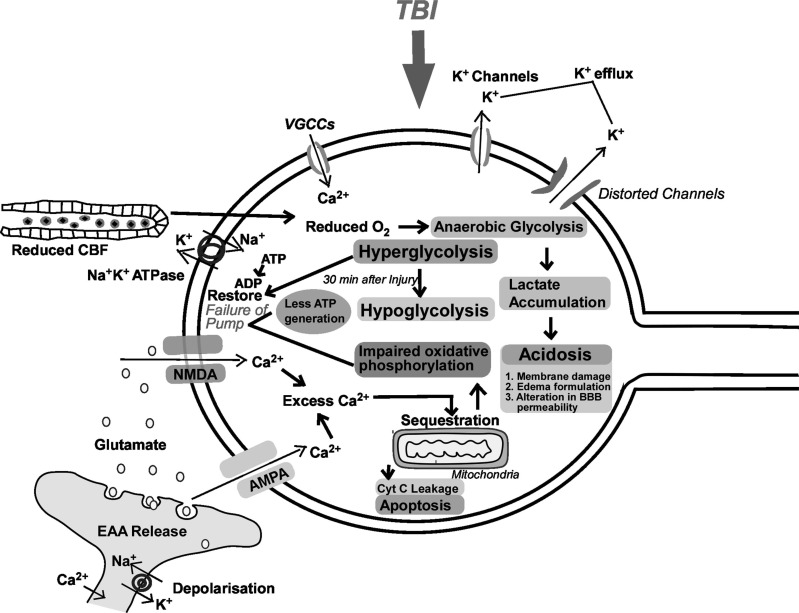Fig. (5).
Diagrammatic representation of neurometabolic alterations in TBI. Initially, a massive efflux of K+ leads to a strong wave of depolarization. To maintain this ionic dyshomeostasis, neuronal cells carry-out hyper-glycolysis to meets the energy demand and restoring the function of Na+K+ATPase pumps. Simultaneously, distortion of cerebral vasculature due to mechanical impact leads to reduced CBF, ended in the switching of aerobic to anaerobic metabolism and lactic acid accumulation which initiates hypometabolism. This hypometabolic and acidosis state of the cell fails to meet the energy needs and restore the function of ionic pumps. Concurrently, glutamate releases enhance the level of intracellular Ca2+ which sequester inside mitochondria and causes impairment of oxidative phosphorylation. This is the second neurometabolic cascade that fails to restore the function of ionic pumps. AMPA: α-amino-3-hydroxy-5-methyl-4-isooxazolepropionic acid Receptor; CBF: Cerebral Blood Flow; Cyt C: Cytochrome c; EAA: Excitatory amino acids; NMDA: N-methyl-D-aspartate Receptor; VGCCs: Voltage-Gated Calcium Channels. (A higher resolution/colour version of this figure is available in the electronic copy of the article).

